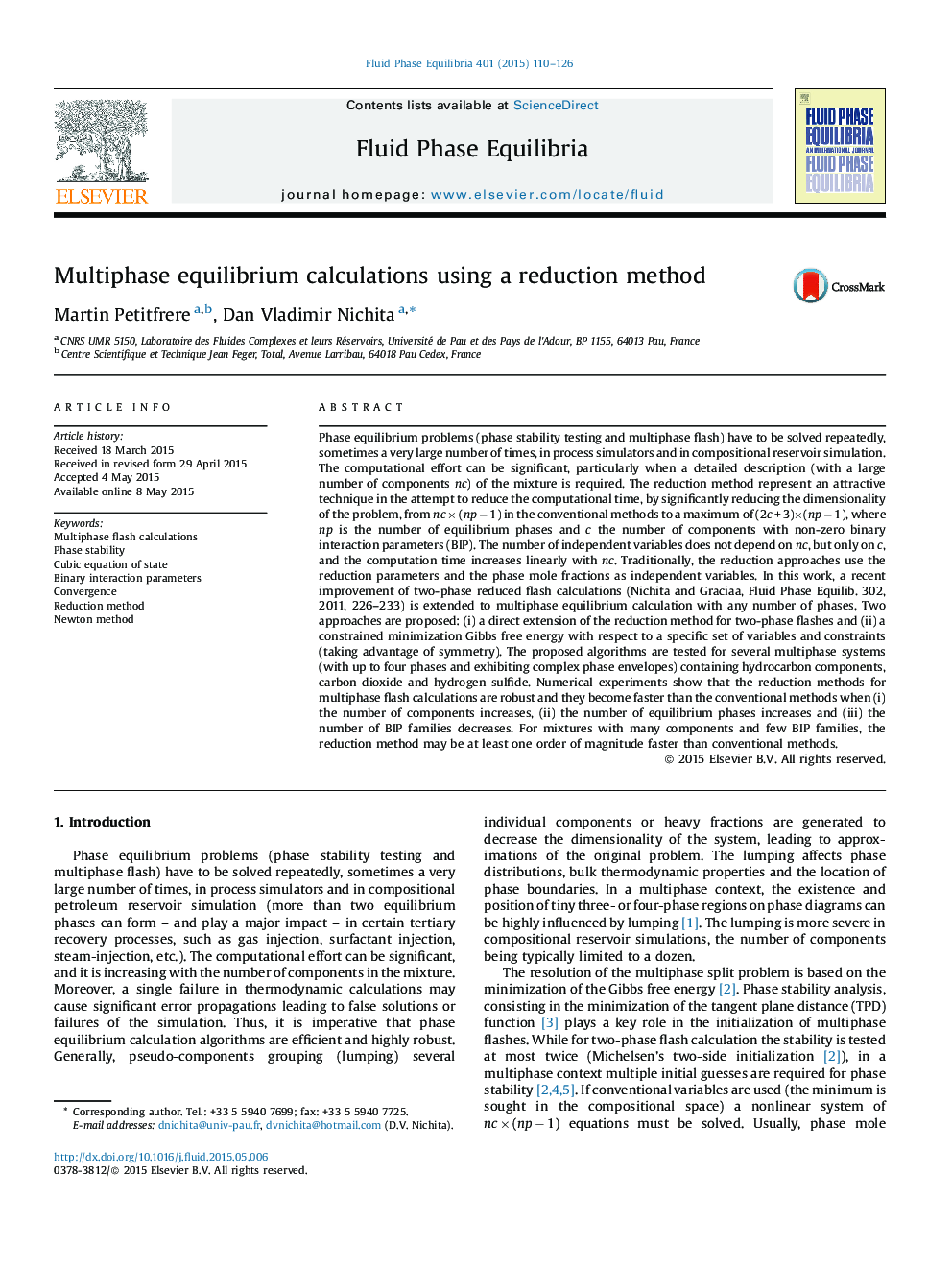| Article ID | Journal | Published Year | Pages | File Type |
|---|---|---|---|---|
| 201292 | Fluid Phase Equilibria | 2015 | 17 Pages |
Phase equilibrium problems (phase stability testing and multiphase flash) have to be solved repeatedly, sometimes a very large number of times, in process simulators and in compositional reservoir simulation. The computational effort can be significant, particularly when a detailed description (with a large number of components nc) of the mixture is required. The reduction method represent an attractive technique in the attempt to reduce the computational time, by significantly reducing the dimensionality of the problem, from nc × (np − 1) in the conventional methods to a maximum of (2c + 3)×(np − 1), where np is the number of equilibrium phases and c the number of components with non-zero binary interaction parameters (BIP). The number of independent variables does not depend on nc, but only on c, and the computation time increases linearly with nc. Traditionally, the reduction approaches use the reduction parameters and the phase mole fractions as independent variables. In this work, a recent improvement of two-phase reduced flash calculations (Nichita and Graciaa, Fluid Phase Equilib. 302, 2011, 226–233) is extended to multiphase equilibrium calculation with any number of phases. Two approaches are proposed: (i) a direct extension of the reduction method for two-phase flashes and (ii) a constrained minimization Gibbs free energy with respect to a specific set of variables and constraints (taking advantage of symmetry). The proposed algorithms are tested for several multiphase systems (with up to four phases and exhibiting complex phase envelopes) containing hydrocarbon components, carbon dioxide and hydrogen sulfide. Numerical experiments show that the reduction methods for multiphase flash calculations are robust and they become faster than the conventional methods when (i) the number of components increases, (ii) the number of equilibrium phases increases and (iii) the number of BIP families decreases. For mixtures with many components and few BIP families, the reduction method may be at least one order of magnitude faster than conventional methods.
